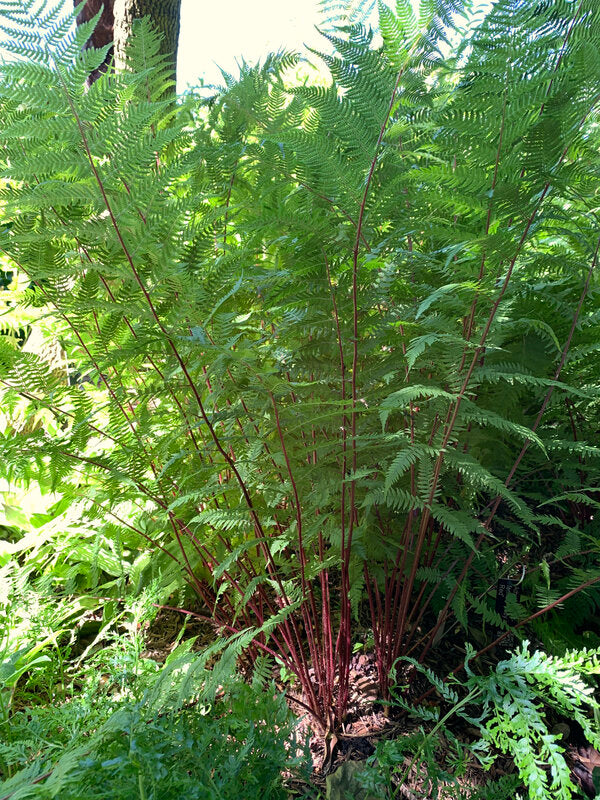Athyrium filix-femina 'Lady in Red'
Lady in Red Northern Lady Fern
Item #: 4968
Zones: 3a to 8b
Dormancy: Winter
Height: 20" tall
Culture: Part Sun to Light Shade
Origin: United States
Pot Size: 3.5" pot (24 fl. oz/0.7 L)
To be alerted when this plant is back in stock, log in and add it to your wishlist. You will receive an email when it is available.
Athyrium filix-femina 'Lady in Red' is a hot selection of our North American native, deer-resistant lady fern (Athyrium filix-femina var. angustum forma rubellum) from a volunteer at The New England Wildflower Society. The lacy, light green foliage is held upright on dark, brilliant red-violet stipes (fern stems). Each plant of Athyrium 'Lady in Red' makes a slowly spreading patch to 3' in 5 years. This deciduous, easy-to-grow fern makes a great blending plant for hosta and other bold-leaf plants in the woodland garden.
Maintenance:
Athyrium 'Lady in Red' requires virtually no maintenance. As a deciduous fern, it dies back to the ground at first frost, so you can remove the old fronds when you rake leaves in fall. Since Lady in Red fern is a tight clumper, your plant will never need to be divided...unless you just want more to spread around.A clump should be able to be divided in 3-5 years of good garden conditions.
Growing Conditions:
Athyrium 'Lady in Red' prefers moist organic soils, although it's certainly tolerant of short term drought. If droughts last longer, the clump may go prematurely dormant, although it would take a very severe drought to cause lasting damage. Lady in Red fern thrives in both clay and sandy soil, although a humus-rich soil is preferred.
Nomenclature:
Some taxonomist have now elevated Athyrium angustum to species status, compared to its previous status as a subspecies of Athyrium filix-femina.
Natural Impact:
Because ferns don't flower, they aren't a draw for pollinators. Their lack of palatability to deer, however, is highly prized by shade gardeners in areas with high deer pressure.


-
Other Attributes
Genus: Athyrium
Leaf Color: Green
Container Role: Fillers
Garden Themes: Cottage Garden Plants , Living Wall , Rock Garden Plants
Other: Edimentals , Deer Resistant Plants , Dry Shade Plants , Florida Native Plants , Georgia native plants , North American Native Plants , North Carolina Native Plants , Rabbit Resistant Plants , Rain Garden Plants , RHS Award of Merit Winners , Texas Native Plants , United States Native Plants



